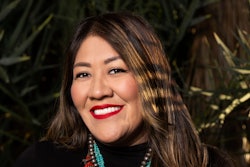Between June 2004 and June 2020, almost 12,000 institutions of higher education closed their doors. Some of those institutions closed in an orderly fashion—students, faculty and staff were given ample warning, and arrangements for continuing a student’s education at another institution, teach-out plans, are made.
But sometimes institutions experience an abrupt closure, where students, faculty and staff receive little to no warning. According to a new study of 467 closed institutions and their 143,215 students, 70% of students experienced an abrupt closure.
But even with ample warning, school closures have a steep impact on student success. Less than half of students who experience closure ever re-enroll in a postsecondary institution.
 Dr. Rachel Burns, senior policy analyst at the State Higher Education Executive Officers Association.
Dr. Rachel Burns, senior policy analyst at the State Higher Education Executive Officers Association.
Their research has revealed that the majority of institutions that closed were private, for-profit institutions, followed by private non-profit institutions. Closures were also found to disproportionately impact students of color and non-traditional students.
The report, A Dream Derailed? Investigating the Impacts of College Closures on Student Outcome, offers policy suggestions at the state, federal, and accreditor level, encouraging trend analysis through multiple measurements to assess an institution’s viability, and building more guardrails that can keep students on the path toward earning a credential. Teach-out partnerships must be vetted, including branch campuses of the closing institution, as some students who re-enrolled simply faced yet another closure.
“The report lays the groundwork to explore how state policies can prevent closure and protect students,” said Dr. Rachel Burns, senior policy analyst at SHEEO. “The federal department of education, state higher education agencies, and accrediting bodies (the regulatory ‘triad’) have the authority and responsibility to take actions to prevent closure and ensure that state consumer protection laws are enforced.”





















